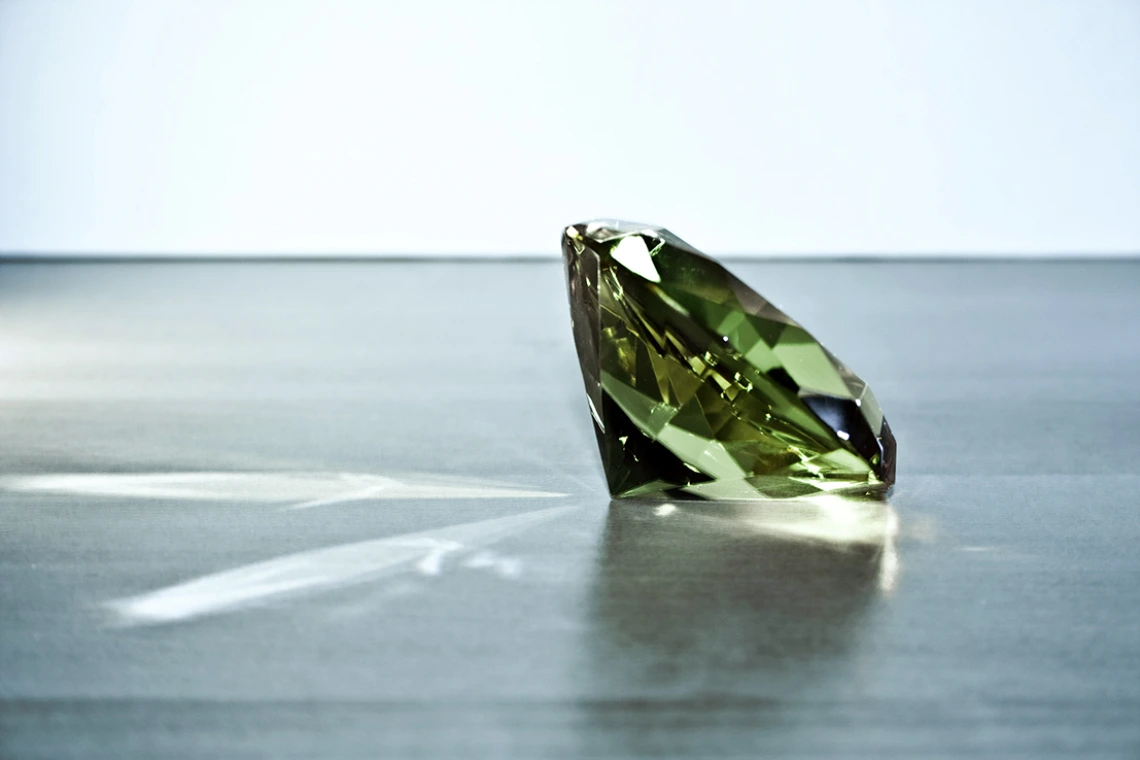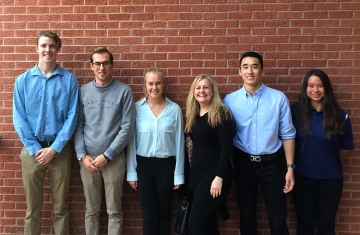Making Sure Gemstones Measure Up


Project Title: Mounted-Gemstone Weight Calculating Device
Team 18002 Members:
Ludovico Borghi, electrical and computer engineering and optical sciences and engineering
Emily Elizabeth Calara English, biosystems engineering
Matthew Heger, electrical and computer engineering
Meghan Elizabeth Ryterski, mechanical engineering
Chengyu Zhu, materials science and engineering
Sponsor: The RealReal
An Invaluable Method for Accurate Gem Measurement
Reselling pieces of jewelry involves measuring the gemstones mounted in them to determine their worth, a process currently done by hand with tools like calipers and millimeter gauges. This means the measurement of a jewel can vary from one business to the next, depending on the skill of the person doing the assessment.
When it comes to valuable gems like diamonds, even very small differences in measurement can lead to huge differences in appraised value. The RealReal — the largest retailer of luxury consignment goods, including jewelry, in the United States — is partnering with the Engineering Design Program and asking students to build a mounted-gemstone weight calculating device to minimize the potential for inconsistent appraisal.
“It’s something that had never been done before in our industry: creating an instrument to identify the carat weight of gemstones in a mounted piece of jewelry without unmounting it,” said Loretta Castoro, master gemologist at The RealReal and the team’s industry mentor.
“We come across pieces every day that are brought to us, and when we measure them and calculate their weight, it will be totally different from the appraisal.”
Step Aside, Ocean’s 8, for Desert’s 5
The students plan for the new device to take photos of the mounted gemstone from multiple angles and use the photos to create a 3D image of the entire gem, including the parts covered by mounting. A simple software interface will allow users to select the gem type — for example, ruby or diamond — and the software will calculate the stone’s carat weight according to its density.
Team lead Meghan Ryterski said she was drawn to the project because it was an opportunity to learn how to use new technology — and it sounded cool and heist-y to her.
“I don’t know if you saw ‘Ocean’s 8,’ but we’re basically doing exactly what they did in the movie for our project,” she said, smiling.
Mentor Brings RealReal to Program, Makes X-ray Problems Transparent

The RealReal project team
The initial project proposal suggested the students use lidar technology to create the system, but the team is exploring other options as well.
While their college mentor, Bob Messenger, provides priceless expertise in mechanical engineering and project management, geosciences professor Bob Downs has been another invaluable resource. For example, when the team briefly considered using X-ray to measure the gems, he had the gemology knowledge to let them know why it wouldn’t work: X-ray could change the color of the stones.
Downs first met some of The Real Real’s representatives at the Tucson Gem and Mineral Show, one of the gem industry’s biggest events, and was impressed by their mission.
“There are incredible problems that this company wants to solve that are extremely academically oriented,” he said. “The community’s problems are exactly the same as ours in academia.”
The RealReal is endowing a professorship in the Department of Geosciences, but they also wanted to get involved more directly with students. Downs, who has two sons in the College of Engineering, suggested the Engineering Design Program. It’s been a huge success so far.
“I love the team,” Castoro said. “They’re absolutely amazing. It’s been a pleasure to work with the university and the students.”

